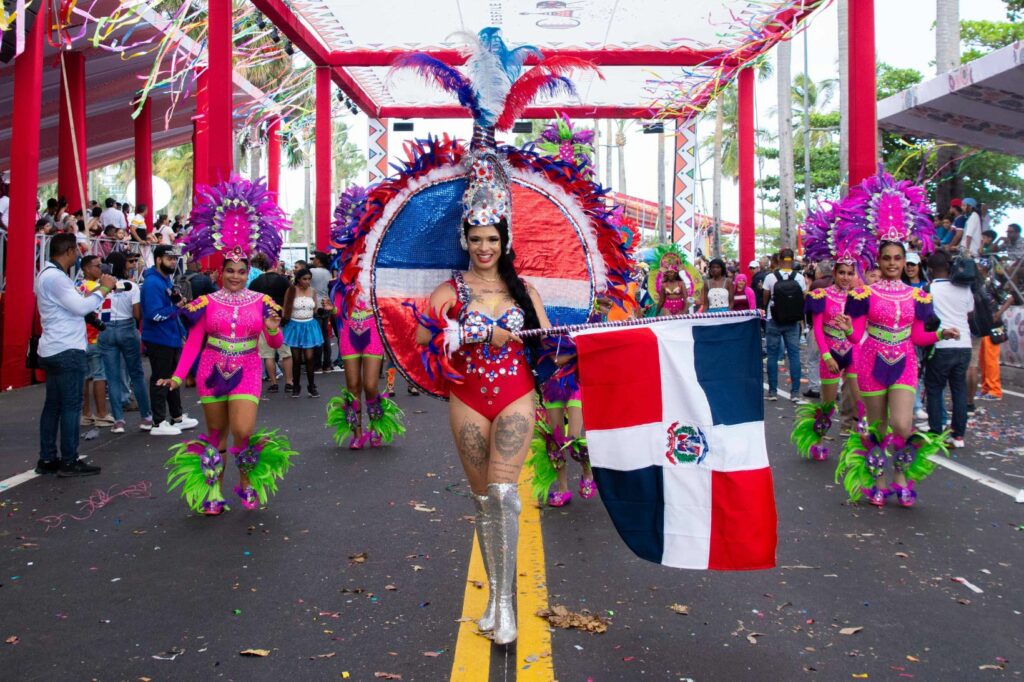The Dominican Republic is a vibrant tapestry of culture and tradition, where festivals and celebrations pulse with life. Known for its warm hospitality and lively spirit, this Caribbean nation offers a colorful array of events that showcase its rich heritage. From the rhythmic beats of merengue to the dazzling costumes of Carnaval, each celebration is a testament to the island’s unique blend of African, European, and Taino influences.
Visitors and locals alike find themselves swept up in the infectious energy of these festivities. Whether it’s dancing in the streets during the annual Dominican Carnival or experiencing the solemn beauty of Semana Santa, there’s something for everyone.
Dominican Republic Festivals and Celebrations
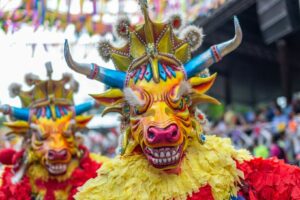 Dominican Republic festivals integrate African, European, and Taino cultural influences, creating a vibrant celebration atmosphere. These events include diverse cultural expressions through music, dance, and traditional costumes. Communities across the country engage in these festivities throughout the year, from large cities to rural areas.
Dominican Republic festivals integrate African, European, and Taino cultural influences, creating a vibrant celebration atmosphere. These events include diverse cultural expressions through music, dance, and traditional costumes. Communities across the country engage in these festivities throughout the year, from large cities to rural areas.
Popular events include the Dominican Carnival, spanning throughout February, where cities celebrate with parades featuring colorful masks and elaborate costumes. Semana Santa, taking place in April, focuses on religious observances combined with lively beach gatherings. The Merengue Festival in Santo Domingo highlights the country’s musical heritage in July, attracting both locals and tourists.
Each festival offers unique experiences. For instance, the Restoration Day on August 16 commemorates the country’s independence with patriotic parades and musical performances. Similarly, the San Juan Bautista Festival in June involves traditional rituals honoring the city’s patron saint, reflecting historical customs. These celebrations emphasize the community’s cohesive spirit and cultural pride.
Carnaval Dominicano
Carnaval Dominicano occurs every February and showcases the nation’s diverse cultural influences through vibrant celebrations. It captures the essence of the Dominican spirit with its combination of music, dance, and flamboyant costumes.
History And Significance
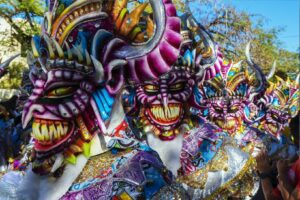 Originating in the 16th century, Carnaval Dominicano roots itself in both pre-Lenten festivals and local traditions. The event serves as an expression of cultural heritage, combining African, European, and Taino influences. Celebrations spread across cities like Santo Domingo, Santiago, and La Vega, uniting communities in a shared cultural expression.
Originating in the 16th century, Carnaval Dominicano roots itself in both pre-Lenten festivals and local traditions. The event serves as an expression of cultural heritage, combining African, European, and Taino influences. Celebrations spread across cities like Santo Domingo, Santiago, and La Vega, uniting communities in a shared cultural expression.
Semana Santa
Semana Santa in the Dominican Republic is a significant religious celebration marked by a mix of solemn traditions and vibrant festivities. This Holy Week, preceding Easter, draws both local and global visitors.
Religious Traditions
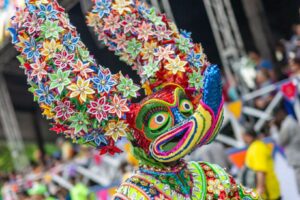 Catholic observances dominate Semana Santa, reflecting deep-rooted spiritual connections. Churches host processions and masses throughout the week. Good Friday ceremonies honor the Crucifixion, with reenactments drawing crowds. Statues portraying biblical scenes enhance the solemnity of events, creating reflective atmospheres.
Catholic observances dominate Semana Santa, reflecting deep-rooted spiritual connections. Churches host processions and masses throughout the week. Good Friday ceremonies honor the Crucifixion, with reenactments drawing crowds. Statues portraying biblical scenes enhance the solemnity of events, creating reflective atmospheres.
Merengue Festival
The Merengue Festival in the Dominican Republic reflects the nation’s cultural heart through the rhythm of merengue music. Taking place in July, it is a vibrant celebration that draws both locals and tourists.
Origins Of Merengue
Merengue, the national dance and music of the Dominican Republic, originated in the early 19th century. The genre emerged from a fusion of European ballroom dance rhythms and Afro-Caribbean beats. By the mid-20th century, merengue gained official national music status, symbolizing Dominican cultural identity.
Día De La Restauración
Día De La Restauración, celebrated on August 16, commemorates the Restoration of the Dominican Republic. This historical event marks the country’s independence from Spain in 1865, following a four-year conflict.
Historical Context
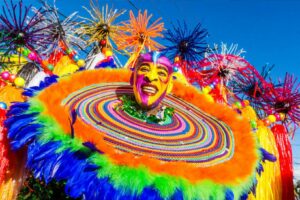 The Restoration War erupted in 1863, as Dominicans sought to regain sovereignty from Spanish annexation implemented in 1861. Inspired by nationalist sentiment, figures like Gregorio Luperón and Santiago Rodríguez led resistance movements. These leaders mobilized guerilla warfare, sparking a widespread revolt against Spanish control. As a result of their efforts, Dominican forces prevailed on August 16, 1865, reinstating national independence.
The Restoration War erupted in 1863, as Dominicans sought to regain sovereignty from Spanish annexation implemented in 1861. Inspired by nationalist sentiment, figures like Gregorio Luperón and Santiago Rodríguez led resistance movements. These leaders mobilized guerilla warfare, sparking a widespread revolt against Spanish control. As a result of their efforts, Dominican forces prevailed on August 16, 1865, reinstating national independence.
Festival Del Merengue Y Ritmos Caribeños
The Festival Del Merengue Y Ritmos Caribeños celebrates the dynamic music and dance traditions of the Dominican Republic, highlighting its cultural richness.
The festival showcases live performances by both local legends and international artists, drawing enthusiastic crowds. Merengue, with its quick tempo and lively beats, takes center stage, inviting attendees to dance along. Other Caribbean rhythms like salsa, bachata, and mambo enhance the musical experience.
The Vibrant Legacy
The Dominican Republic’s festivals and celebrations offer a vibrant tapestry of cultural richness and unity. From the lively beats of merengue to the solemn traditions of Semana Santa, these events encapsulate the nation’s diverse heritage and communal spirit. Visitors and locals alike are drawn to the infectious energy and colorful displays that define these celebrations. Through music, dance, and traditional cuisine, the Dominican Republic invites everyone to experience its unique cultural essence.

